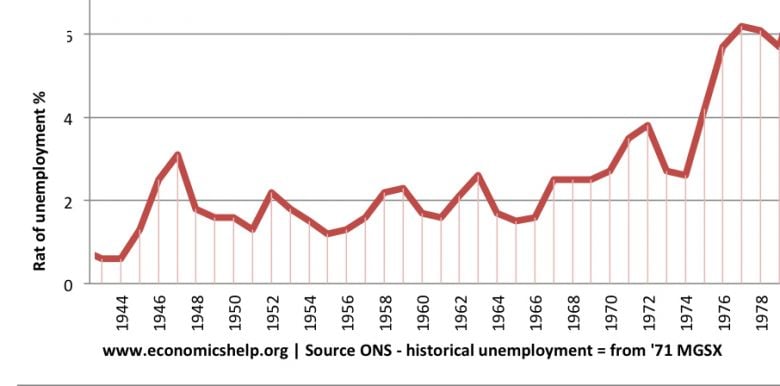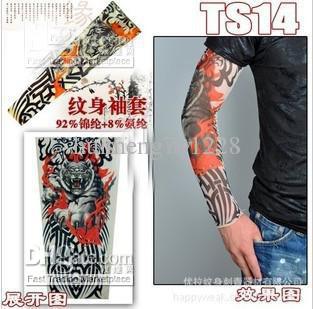The Death Of Subculture part 6: the commoditisation of subculture
This is the sixth article in a series that aims to explore how subculture has changed in the last 30 years. Read part five here. New to the series? Click here to read part one.
The commoditisation of subculture
According to Adam Curtis’s Century of the Self documentary, ’60s counterculture was, in part, a rebellion against the commoditisation and commercialisation of self expression through fashion and the manipulation of peer pressure.
In the early 20th century, the advertising industry started telling people that they should not be ‘one of the masses’ but be an individual by making choices about how they shop. The ad men of Madison Avenue were creating desire by exploiting people’s desires – their ids and superegos – and then cashing in by satiating them with products.
1960s
By the 60s, many young Americans in particular recognised this – they knew they couldn’t shop themselves happy. A counter culture developed from the colliding of a number of factors, including but certainly not limited to:
- The wake of WWII
- Vietnam
- Acid culture
- Western affluence
- The Civil Rights Movement
- The rise of psychotherapy
- The rise of individualism (in itself a reaction to Fascism)
- The Cold War and CND
- Increased skepticism about the benevolence of the US government (MK Ultra, banana republics and foreign wars)
- The rise of eastern philosophy in the West.

The tumultuous 1960s: The Vietnam War, Civil Rights Movement and the spread of ideas about alternate living (Ken Kesey and his merry pranksters encouraged people to ‘tune in, turn on and drop out’)
The main driver was feelings of neglect and/or disenfranchisement which attracted (but was not limited to):
- Intellectuals
- Communists/socialists/anti-capitalists
- Drop-outs
- Minorities (black and women’s groups)
- WWII and Vietnam veterans (from which the Hell’s Angels and other biker gangs spawned).
While there had been counter cultures at various points in history, few of them had as many options for showing it or living it as modern western societies.
While the 1950s might have birthed ‘the teenager’, it was in the 1960s that counter culture came of age. Ken Kesey’s The Electric Kool-Aid Acid Test (1968) admits that that 60s counter culture failed, but there was now a methodology and a toolkit. The Mad Men had created a society of ‘good’ American ‘individuals’ by telling them what music to listen to, what clothes to wear and what car to drive; what to aspire to, what to think and how to behave. The counter culture simply inverted this: don’t get a job, dress androgynously, give your bodies freely, question everything and take drugs while you do it (but not the drugs of the establishment – drink and cigarettes).
Andy Warhol had successfully made the point that art was simply another product – and then made doing so a business, mass producing works of art using industrial techniques.

Andy Warhol’s Marilyn Monroe screen prints – mass production art for the first time
While there had been counter cultures at various points in history, few of them had as many options for showing it or living it as modern western societies.
It is worth noting that very little of this was experienced in the UK which was still reeling from the cost of WWII. But this in itself was a time of great inequality and unseen poverty, when the seeds of full-blown counter culture was gestating. These are two moving collections of photography of UK poverty in the 1960s. The Guardian and The Manchester Evening Standard.
1970s
Into the 1970s, companies began to cash in on youth culture dollars – creating products just for people who wanted to say that they weren’t like their parents. Companies and their ad agencies simply applied all the methods of creating desire and exploiting it for the new generation.
But the cycle started again and by the mid-’70s the US and UK had birthed another counter culture – punk.
A key catalyst in the UK was a stagnant economy under the Wilson and Callaghan governments which led to mass unemployment, the three-day week and, eventually, the Winter Of Discontent. As well political oppression the movement focused on inequality – gay rights, women’s rights, mental health issues and workers rights.

A whole new ‘language’ had to be created from scratch because consumerism had exploited the semiotic signals of ’60s counterculture (kaftans, flares and floral shirts) to sell to millions of suburbanites who ‘wanted to be cool’, rendering them establishment and, therefore, useless. One casualty was music: record labels seeking to replicate the music of the counterculture for profit, inadvertently cleansing it beyond ‘cool’ in the process.
The methodology was followed to a T. This more negative and aggressive subculture had its own set of iconoclastic views inverting popular rules and values: anarchy, leather and studs, mohawks, tattoos and piercings, masculinisation of women, cynicism not sentimentalism, music that reflected the anarchy and aggression of the movement.

One of the ironies of UK punk was that so much of its ‘language’ and mythos was created by two fashion entrepreneurs – Vivian Westwood and Malcolm McLaren.
As punk’s notoriety spread, more and more ‘tourists’ co-opted the styles and music – diluting the original message. As punks were normalised by BBC reports, edgy tv shows and seaside postcards, originators disliked being a theme park attraction and moved to new forms of expression.
Companies exploited subcultural associations for profit
Companies sought to exploit these subcultural associations for profit – for example Dr Martens boots – and often created sanitized representations of punks to sell products. This was just another reason to change the subcultural ‘language’. Musical subcultural schism and cross-pollination into the ’80s gave us two-tone/rude boy/ska, the new romantics, goth, hardcore (punk) and others, as well as reinvigorating the heavy metal scene.
Importantly, the new conservative government’s policies resulted in economic economy and affluence for most – GDP reaching a high in 1988 not reached since – but unemployment for many in specific areas/industries.
Disco
Out of the 1960s and into the 1970s black musicians had created new musical forms from funk, soul and ‘R&B’ to interpretations of jazz. The mid-’70s was a turning point when, again, big business saw an opportunity to take and package this product for a larger (whiter) audience. Until then a relatively unknown style, disco was packaged for the mainstream white suburban audience – especially with the proliferation of night clubs/dancing clubs. (This is a simplification and I acknowledge that this remains a contentious issue).
Hip-hop is another urban black subculture that was exploited by big business – ultimately becoming unrepresentative of its raison d’etre.

White artists co-opting black music: Elvis, The Rolling Stones, The Bee Gees, Vanilla Ice, Joss Stone.
David Cross and Bob Odenkirk make this point to comic effect in this classic Mr Show sketch.
A note on the 90s
After the 1991 financial crash, life in the West continued to improve for the majority of the population. Towards the end of the ’90s there were a number of subcultures visible in the streets: heavy metal (nu metal), hip-hop, ’70s revival, clubbers.
But the revivalism that had inspired earlier subcultures or just trends, was now a conscious sport and more people seemed to be picking extinct or redundant subcultures with which to identify. By the end of the 90s universities and colleges hosted 60s nights, 80s nights, 70s nights, jazz nights, mod nights, rave, drum and bass, rock nights, funk nights etc. etc.
More than creativity, innovation and looking forwards, people were picking history as an escape from the present. It was also a way of being different as brands increasingly exploited new trends. It also allowed people of one time and place, to say who they were by using a larger temporal palette: punks, beatniks, old skool b-boys, hippies – all in the same sixth form class in 1998.
People were using brands to say something about their subculture
Parallel to this was a relatively new phenomenon that had started in the ’80s: subculture that actually used and adopted brands to say something about their subculture: Workwear brands like Carharrt, Timberland and Dickies became associated with hip-hop; Jack Daniels and Harley-Davidson with rock music; and sportswear brands associated with illegal raves.
Was it that everything was now a brand? And, as such, only a few of them could stand out?
In the 1960s, owning a Ford Mustang was a statement of self: values, money and personality. That’s what the adverts said.
Western affluence created more opportunities for companies to create products and by the 80s there was an unfathomable array of choices of a vast number of different products. Product taglines were pumped out at a rate, and what before had been catchy (it’s toasted, a mars a day…), became white noise: just do it, have it your way, it’s toasted, genius, coke is it.
Many artists even launched their own brands so others could identify more directly and unambiguously.

A selection of Wu Wear, the brand launched by Staten Island-based hip hop act, The Wu Tang Clan.
And then suddenly it seemed like everyone had their own branded products.

Jay Z’s Rocawear, Jamie Oliver has branded literally dozens of kitcheny things, Gwenyth Paltrow’s nebulous ‘lifestyle brand’ Goop, and Kanye West – who launched his Yeezy clothing line.
The 21st century
The backdrop of the first part of the new millennium was increased Western affluence (despite two recessions), improved equality and opportunities for minorities and even more moves to centre-left politics.

Subcultural innovators were always able to stay one step ahead of companies keen to co-opt and exploit their subcultural capital – but brands seemed to be gaining on the subcultures, always poised like a hawk, ready to swoop on something they could create, brand and sell.
As the power of brand became ever more powerful, it manifested in more and more areas of our lives. Soon nothing would be unbranded. This gave subcultures an increasingly limited scope for their ‘language’ – from clothing and music to the vernacular itself.
It became a challenge for those who wanted to be different, to find or create a uniform unencumbered with semiotic value
“Ultimately,” Says Stephen Hill, “the overground invasion of alternative culture, and the ridiculous conclusion nu-metal reached at its height [in the early ’00s], represents the creative death rattle for subcultures like this. It feels like it’s been a slow dissolving and co-opting into the mainstream ever since. Footballers have tattoos now. Pop stars have piercings. Kids TV presenters have brightly coloured, dyed hair. Marilyn Manson shirts bought from Top Shop are worn by social media darlings the world over. When the alternative is the mainstream, what is the alternative to that?”
It became a challenge for those who wanted to be different, to find or create a uniform unencumbered with semiotic value. While the high street still seemed obsessed with labels – sports, high fashion, urban, heritage – subcultures tried harder and harder to create something unimpeded by brand value and semiotic connotation.
Are tattoos the last unbranded item?
Is it a spurious correlation that as there were fewer avenues for non-brand self-expression, the UK/US hardcore and metal scenes of the mid/late 00s chose tattoos as a key sign of membership – a real commitment, an ‘irreversible’ and long-term commitment. Not only did tattoos have no brand links, but they were unlikely to.
NB: while it was unlikely that TopShop/Red Bull/BHS would start doing tattoos or selling tattoo guns, it was possible to purchase tattoo sleeves that you could put on and take off. It just proved the demand for access to whatever was ‘cool’.

It turns out that even this wasn’t off-limits and high street brands started using tattooed models. Series 3-4 of Mad Men neatly shows how the marketing professionals of the time had to figure out how to sell to this new type of young person, but the marketers of the 00s grew up in the 80s and 90s – they already knew what to do. Having played a role subcultures when they were younger, they were now selling that cultural capital to businesses.
The game was now rigged: brands knew that all they had to do was keep an eye on urban youth, social media, art school scenes and read a few cool blogs to know what product to create or how to create a marketing message that would appeal to them. And now you could do it from the office, you didn’t even have to buy a magazine or go to a gig.

A few of Primark’s finest, tapping into interest groups and subcultures to shift units.
After tattoos and body modification, what was left for the subcultures? How could you create anything meaningful if it was going to be available in Primark two months later? In fact, why would you create anything to do a job if it was going to be redundant two months later?
Had subcultural innovators finally received the message? It was pointless to try and be different…
Recent articles on new subcultures (2016-2017) suggest that scene creation has almost become entertainment for its own sake. But these subcultures seem to be merely fashion trends with no message, no purpose or particular reason to exist.
Other social commentators suggest that just as ‘hipsters’ – with their artisanal and homemade fare – was a reaction to ‘branded and mass-produced everything’, so the successors to the hipsters are into brands – they’re just choosing them for different reasons.
Scene creation has almost become entertainment for its own sake
Whereas some subcultures kicked against disposable culture, Gen Z are the children of people for whom a branded life is normal. It is only change that people dislike; Gen Z aren’t living through an increasingly disposable world, it’s just how it is, so there’s no kickback. Have young people have grown up perfectly adapted to expect frequent change and don’t mind that nothing’s permanent or meaningful?
Subcultures appealed to members by having a set of values that they agreed with. It was powerful.
Subculturally savvy marketers did the same with brands and companies talked about brand values – appealing to consumers with messages of freedom, self-expression, fair trade, value or glamour.
And it worked. People aligned themselves with brands who purported to stand for something: Red Bull, Innocent, Virgin, Orange and the mother of brand value successes, Apple. Some brands went so far as to be anti-brand.

But trust has all but evaporated. The Protein Youth Report, a study of 3,500 urban youths, states that: “Institutions and establishments are increasingly exposed for abusing their authority, while media and brands are scrutinised for misrepresenting and misleading society. In this post-truth world the youth have realised that, to make it as a generation, they’re going to have to subvert traditional hierarchies and craft their own path.”

A quick Google of 2017 adverts reveals the focus: individuality and the self.
The study reflects the concerns and feelings of youth for decades: “They are (collectively) on their own. They’ve realised that their best interests aren’t represented or championed by those in power.” But whereas previous subcultures created parallel worlds to live in, Gen Z are “becoming increasingly conscious of their ability to actively improve the world they live in.”
“Everyone is in easy reach,” believes press, radio and TV and communications professional Scott Bartlett. “Every kid can be targeted with marketing. In the past, big business would only want in if something was threatening to go mainstream. Now, things change at a faster pace.
“Subcultures grew and thrived because mainstream outlets had no interest in catering for niche groups/subcultures, so people stuck together more because they had to. If I wanted to know what was happening, I had to go to the same places and read the same magazines as everyone in my little thrash metal circle. Now I can just breeze through (what would have been) a month’s research in 10 mins on my phone and those brands not only want my £10.50 but can actively chase it with a Facebook ad.”
Click here to read the next installment of The Death Of Subculture. Part seven: Subculture Becoming Culture, Neotribalism and What’s Next For Subculture?
.png)

